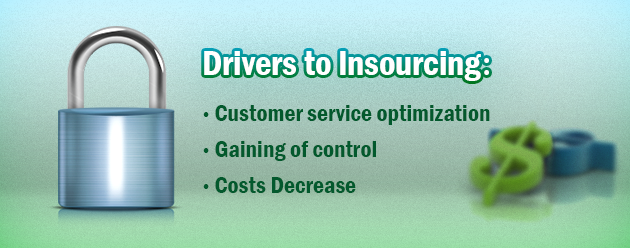A dilemma of whether to outsource or not is extremely relevant today. When this decision is being made short-term profits and long-term effectiveness must be well-balanced. Obviously both outsourcing and insourcing have a set of pros and cons, yet this issue remains a source of constant dispute.
Global recession is the best time to test outsourcing strategy. When saving costs plays such an important role, organizations have to take advantage of pretty much any kind of approach in business management providing for competitive edge.
The major elements of extensive outsourcing are decreasing of costs, productiveness, professional competence, industry knowledge and support received from a service vendor.

Advantages of Outsourcing Are:
- Ability to focus on core business.
- Persistence and risk management (outsourcing has to help persistence while decreasing risk which a substandard operation level would cause).
- Resource flexibility (outsourced contracts often guarantee some amount of freedom in implementing an appropriate level and skill combination of employers and at a cheaper price).
- Decreased overheads (distributing the overheads of an inside operation over a number of accounts may empower a service vendor to supply such a management service at a reduced price).
- In-house staff development (gaining new skills through outside partners develops internal personnel).

Among Outsourcing Disadvantages Are the Next Points:
- Management control loss (customer and service vendor goals differ which may lead to various management control issues).
- Certain threat to confidentiality and security (all the data must be protected with a penalty clause for different case scenarios).
- Different cultural methods for running business (depending on a country origin of an outsourcing vendor, rules for managing business may differ significantly being affected by local cultural peculiarities).
- Allegiance to financial power of another organization (outsourcing vendors often operate in various market places, other than your core business; the services of your company are basically dependent on them and this risk should be accurately assessed.
- Poor publicity (with all the negativity circling around outsourcing in the world, it is very easy to let a company fall into the dark place where the staff will be confused with having to be divided into a few parts, this however can be avoided with the right strategy adopted).
One more major argument against outsourcing is the concern of ending up with internal staff being underskilled. Is it a potential problem? If so, the answer is quite obvious. Businesses should really research this subject and find out what sort of development and training outsourced staff could get.

There Are 3 Key Drivers to Insourcing:
- Perceived requirements to optimize customer service
- Gaining greater control over functions which were outsourced before
- Decrease costs
In a survey back in 2012, 48% of the respondents said they had cancelled an outsourcing contract before it was completed, “for cause or convenience,” one audit & consulting firm informed. And among those who discontinued their agreements midcourse, 34% picked to get the work done internally.
Insourcing today is a small trend compared to the global outsourcing giant. And even though outsourcing industry is rather mature, there are more and more customers thinking over the question of whether an outsourcing deal, which isn't meeting their expectations, should be insourced or re-tendered.
The survey received actual responses from 22 primary industries across 23 countries. According to it the majority of customers prefer to adjust broken deals through re-negotiation with the service vendor or re-tendering the whole project. Nonetheless, insourcing is being considered as well as feasible option in case business situation and drivers correspond to it.
Although insourcing in order to decrease costs may seem like a non-intuitive action – given that the majority of companies primarily outsource to reduce their expenditures – organizations aren't always able to fully realize cost efficiency that they expected from their outsourcing programs. In case economic profits are less than it was anticipated, a company may decide to bring part or all of their outsourced projects back inside.
However, insourcing remains to be a challenging strategy. It is quite difficult to hire all the necessary resources to insource required job functions. In addition, organizations that decide to adopt the approach with building internal capabilities for the jobs that have been outsourced for a while, should seriously evaluate other factors including possible cost increases.
In order to define which path to follow, a thorough business case should be the first step, considering a complete set of charges associated with the change to come.
In our opinion, changing from outsourcing to insourcing will most likely be not effective or productive for any type of business. This will occur due to a huge amount of work and costs previously invested. By bringing back inside a small contract that is presently outsourced with an outside single service professional, a company will lose the experience which delivered major service the organization used to enjoy in the past. That means that with a service rendered a strategic decision must be built in order to support and maintain the business.




